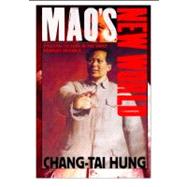
Note: Supplemental materials are not guaranteed with Rental or Used book purchases.
Purchase Benefits
Looking to rent a book? Rent Mao's New World [ISBN: 9780801449345] for the semester, quarter, and short term or search our site for other textbooks by Hung, Chang-Tai. Renting a textbook can save you up to 90% from the cost of buying.
| List of Illustrations | p. ix |
| Acknowledgments | p. xi |
| Note on Romanization | p. xiii |
| Abbreviations | p. xv |
| Introduction | p. 1 |
| Space | |
| Tiananmen Square: Space and Politics | p. 25 |
| Ten Monumental Buildings: Architecture of Power | p. 51 |
| Celebrations | |
| Yangge: The Dance of Revolution | p. 75 |
| Parades | p. 92 |
| History | |
| The Red Line: The Museum of the Chinese Revolution | p. 111 |
| Oil Paintings and History | p. 127 |
| Visual Images | |
| Devils in the Drawings | p. 155 |
| New Year Prints and Peasant Resistance | p. 182 |
| Commemoration | |
| The Cult of the Red Martyr | p. 213 |
| The Monument to the People's Heroes | p. 235 |
| Conclusion | p. 257 |
| Notes | p. 269 |
| Glossary | p. 307 |
| Bibliography | p. 313 |
| Index | p. 341 |
| Table of Contents provided by Ingram. All Rights Reserved. |
The New copy of this book will include any supplemental materials advertised. Please check the title of the book to determine if it should include any access cards, study guides, lab manuals, CDs, etc.
The Used, Rental and eBook copies of this book are not guaranteed to include any supplemental materials. Typically, only the book itself is included. This is true even if the title states it includes any access cards, study guides, lab manuals, CDs, etc.